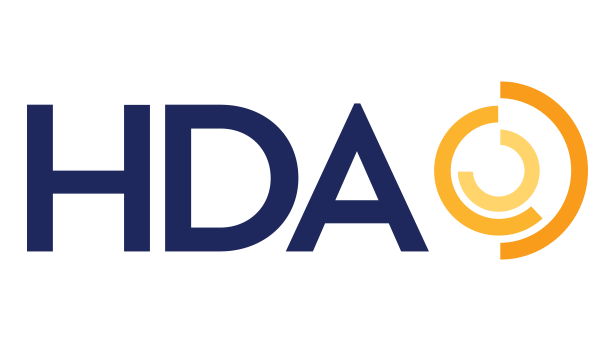The Rx for Drug Shortages? A Better Understanding of the Supply Chain and Collaborative Solutions
Please note: This piece originally appeared as a sponsored content piece for The Hill.
As patients continue to face challenges related to drug shortages, policymakers, regulators and healthcare supply chain leaders are engaged in an essential, ongoing dialogue about their root causes — and importantly, solutions to mitigate their impact. Given this discussion, it is now more important than ever for stakeholders to understand how pharmaceutical distributors operate and their critical role in managing supply disruptions.
While drug shortages’ root causes are complex and varied, distributors are not a driver of these disruptions. Rather, we are a solutions-oriented industry that works every day to minimize their impact on the providers and patients who are most acutely affected.
What’s Actually Causing Drug Shortages
It is essential to first understand the dynamics of the current market. Drug shortages typically occur in the generic and sterile injectable drug classes, and most occur because of market-wide supply constraints, product-specific manufacturing issues, and reimbursement and market access limitations. Common causes within these primary areas include sourcing or manufacturing limitations, natural disasters, market economics, changes in prescribing or patient demand patterns, and product discontinuation. FDA data show that the majority of shortages are due to manufacturing production or quality issues.
In many ways, the current-day generics market is doing exactly what it was designed to do — creating safe and effective low-cost medicines. However, those low costs may be coming at too great an expense to the overall health of the generics sector.
Distributors Support a Resilient Pharmaceutical Supply Chain
The distribution industry supports a robust and competitive generics market that is stable and can consistently produce high-quality medicines. We are only successful when products are moving, pharmacy shelves are filled and patients have access to medicines.
For over 150 years, distributors have built the logistics expertise, supply chain relationships and capacity to navigate shortages and other challenges — and at the same time handle the intricate needs of the marketplace.
Distributors play a central role in ensuring the safe and efficient movement of 10 million medicines and healthcare products from approximately 1,500 manufacturers to nearly 330,000 frontline providers, pharmacies, hospitals and other sites of care on a daily basis. What further distinguishes our industry from others in the supply chain, such as pharmacy benefit managers and group purchasing organizations, is that distributors take legal ownership, financial responsibility and physical possession of medicines.
Apart from one company merger more than 20 years ago, the core of the healthcare distribution industry remains mostly unchanged. The current composition of the sector, which includes larger national companies and smaller regional organizations, allows distributors to expand their inventory, management capabilities, and abilities to meet the broad and unique demands of the pharmaceutical supply chain. This structure not only benefits our manufacturer and provider customers (including chain and independent pharmacies) but, above all, patients across the country who rely on the safe and efficient distribution of lifesaving medicines.
Distributors Help Mitigate the Impact of Drug Shortages
Distributors work to mitigate shortages by building redundancy into their sourcing programs and everyday business practices. They do this by purchasing medicines from numerous suppliers in multiple regions of the world while considering factors such as a manufacturer’s history of reliability, commitment to quality, business practices and cost. Distributors also work to forecast demand and anticipate demand surges. Specifically, distributors use demand forecasting to inform anticipatory purchasing decisions, such as preparing for seasonal spikes for cold and flu season.
When shortages do occur, distributors actively work to mitigate their impact. Our industry regularly monitors for spikes in demand or dips in availability for products and proactively communicates with manufacturers, industry partners and regulators. Additionally, we work with our supply chain trading partners to identify substitute products. In the event demand surges outpace available supplies, distributors individually implement allocation programs to ensure equitable access for healthcare providers and prevent overstocking by customers due to fear of market shortages.
Fixing Shortages Requires a Collaborative Approach
Given our central role, pharmaceutical distributors have a unique view of the supply chain and are eager to provide our perspective on solutions to drug shortages. Broadly, there are several areas in which supply chain stakeholders and the government can work together: strengthening partnerships between the public and private sectors; identifying strategic federal investments in domestic manufacturing capabilities; and, taking steps to stabilize the generics market.
Further, as an industry we are working collaboratively with our supply chain partners on policy solutions and are engaged in the End Drug Shortages Alliance, which brings together distributors, group purchasing organizations, manufacturers and other stakeholders to increase visibility, access and advocacy.
Looking forward, our industry is eager to collaborate with legislators, regulators and our supply chain trading partners on solutions to this complicated challenge. As an industry that prioritizes safe and reliable access to medicines, distributors understand deeply the impact shortages have on patients, their families and the healthcare professionals supporting them. We are committed to doing everything we can to help prevent shortages, and when they do occur, to help mitigate them to the best of our ability.
